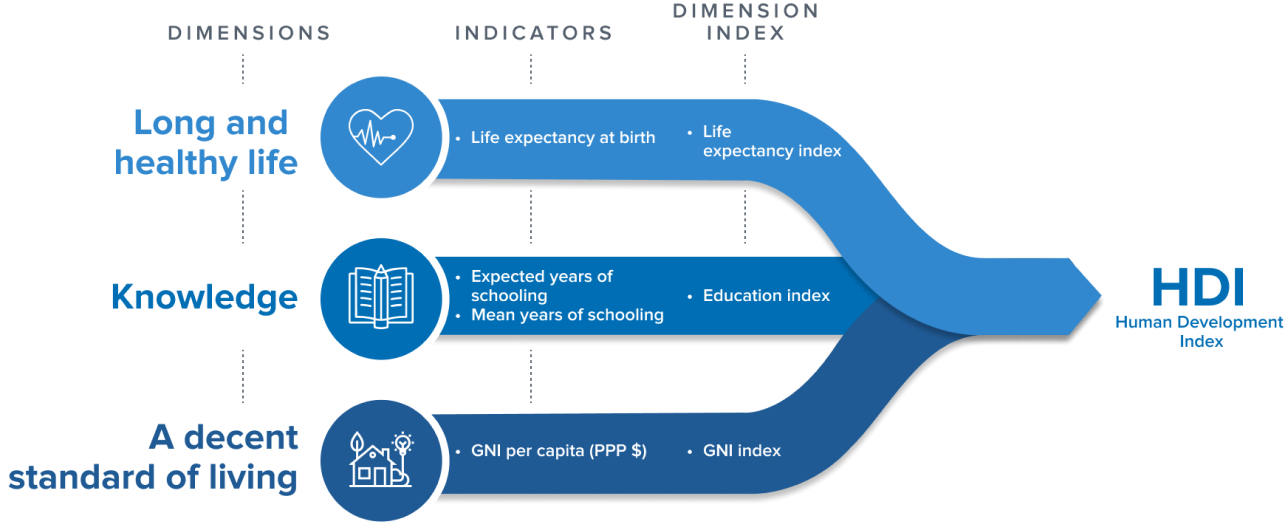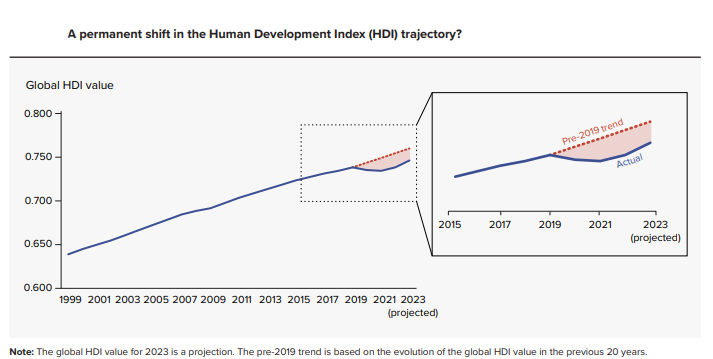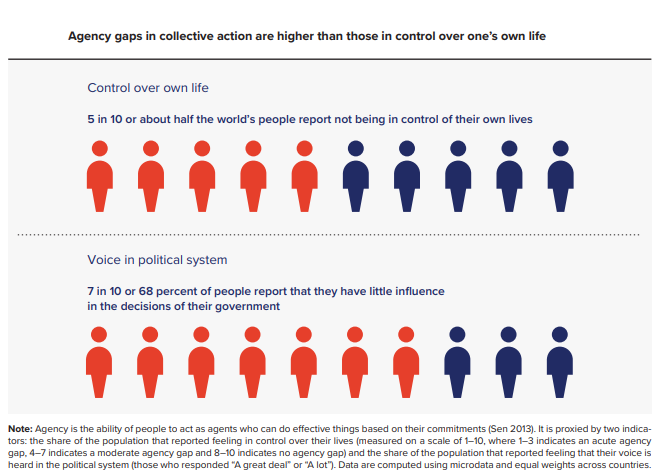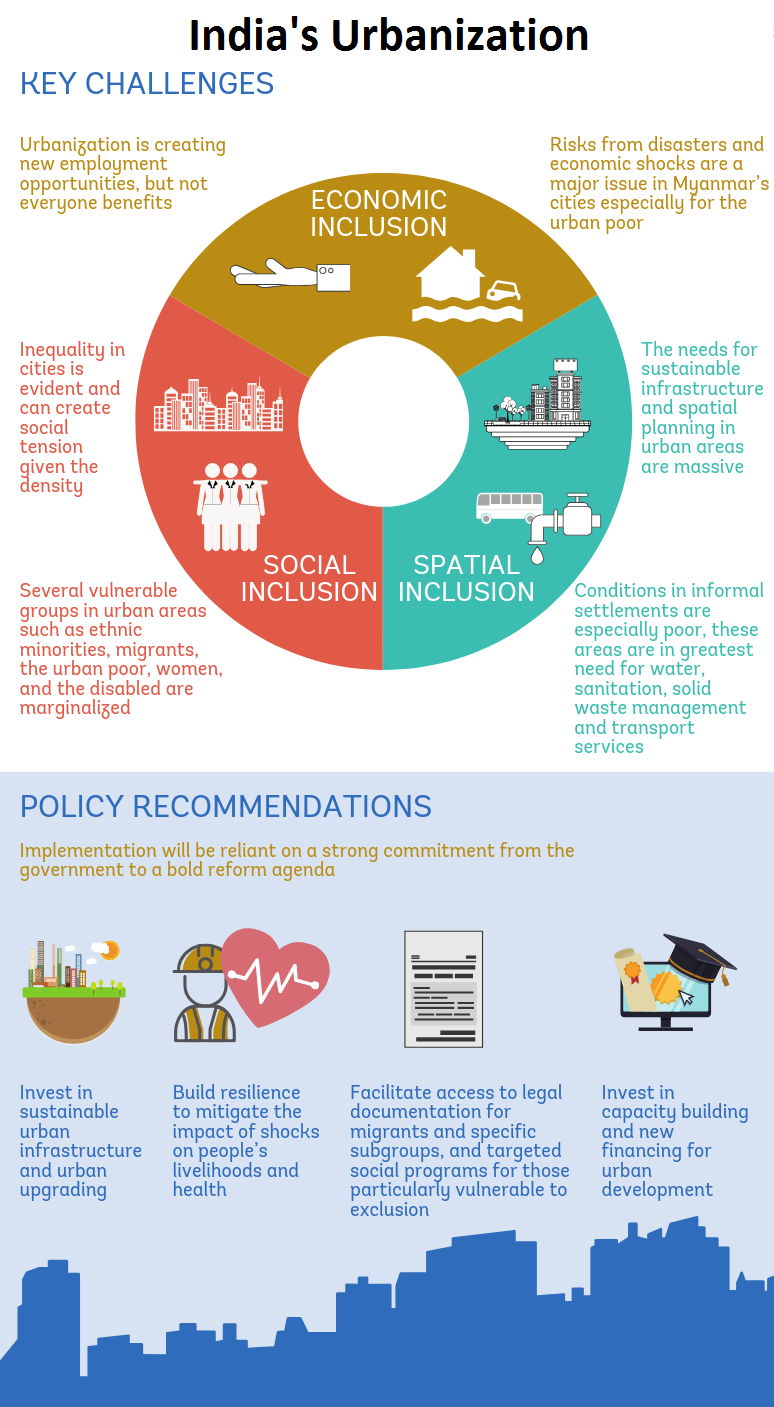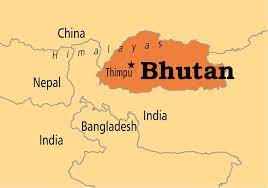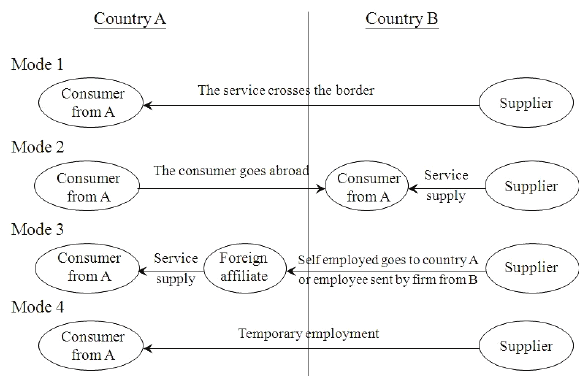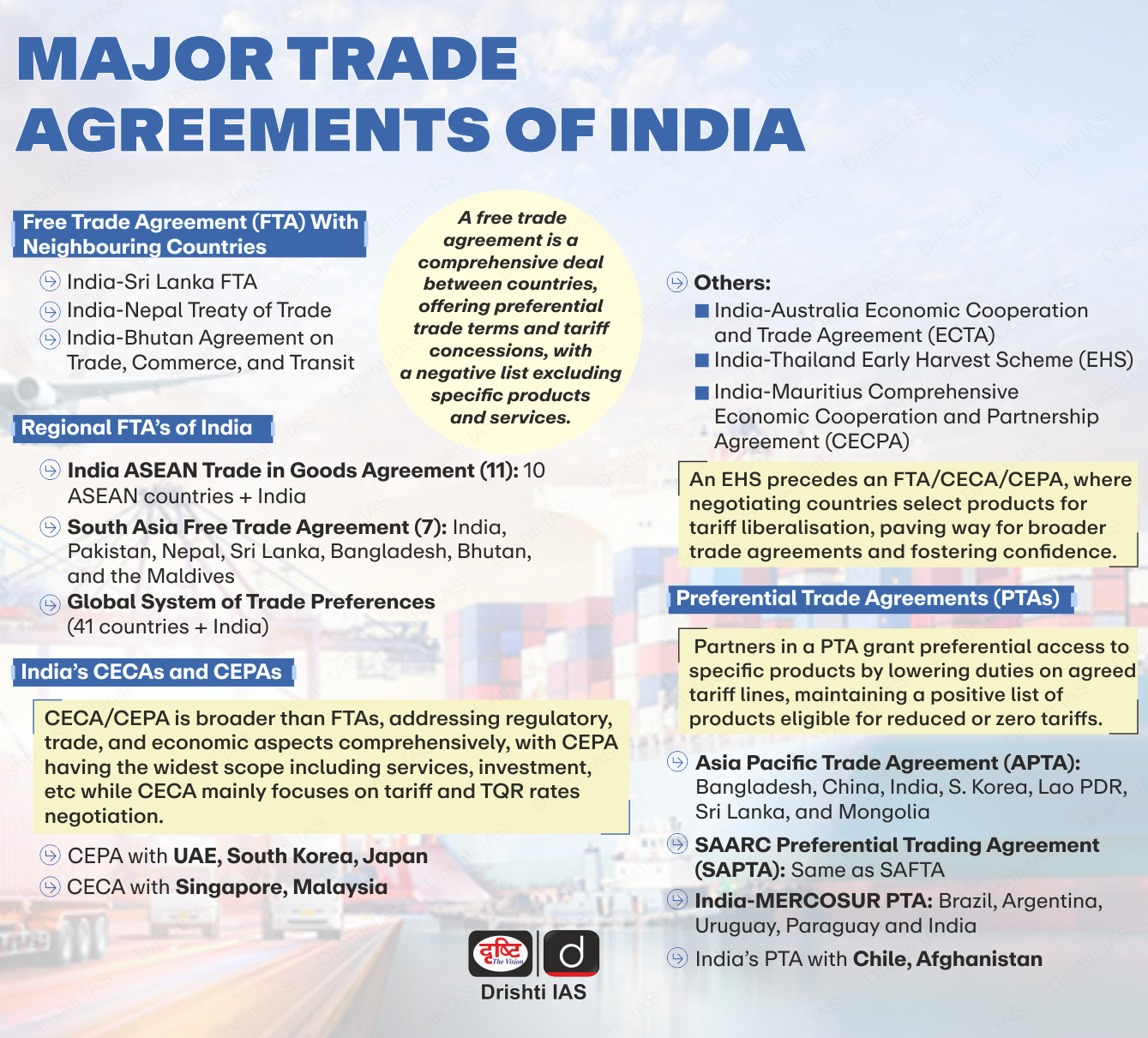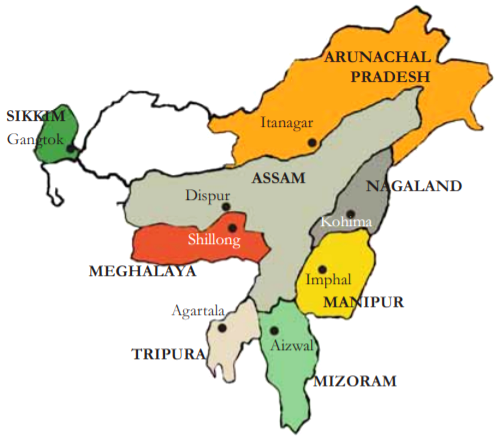Social Justice
SBI's Study on Empowering Women Through SHGs
For Prelims: Lakhpati Didis, Self-Help Groups, NABARD, SHG-Bank Linkage Programme, DAY – NRLM
For Mains: Role of SHGs in Empowering Women, Initiatives Related to SHGs
Source: SBI's Study on Empowering Women Through Self-Help Groups
Why in News?
The State Bank of India (SBI) recently unveiled a research study highlighting the evolving dynamics of Self-Help Groups (SHGs) in India.
- This study delves into the patterns of credit utilisation and digital behaviours among SHGs, their members, and the emerging group known as 'Lakhpati Didis'.
What are the Key Highlights of the Study?
- Rise of SHGs and Lakhpati Didis:
- The SHGs in India, numbering approximately 8.5 million with approximately 92.1 million members, are spearheading a transformative revolution.
- A notable outcome of this movement is the rising proportion of Lakhpati Didis.
- Lakhpati Didi is a government initiative that aims to empower women in SHGs to earn at least Rs 1,00,000 per year through sustainable livelihood practices.
- The program was launched in 2023 with an initial target of 2 crore women, but the target has been increased to 3 crore in 2024-25.
- This movement underscores the growing contribution of women to Gross Value Added (GVA) and economic output.
- Through formalisation initiatives, the increasing participation of women in the formal sector is evident, as reflected in the rising female Labor Force Participation Rate (LFPR).
- A notable outcome of this movement is the rising proportion of Lakhpati Didis.
- The SHGs in India, numbering approximately 8.5 million with approximately 92.1 million members, are spearheading a transformative revolution.
- Bank Linkage and Credit Access:
- SHG Bank Linkage Programme (SHG-BLP), stands as a game-changer with approximately 97.5% of SHGs now holding bank accounts.
- This robust banking relationship enables timely credit access, critical for economic value addition. With optimal funds at reduced interest rates, SHGs overcome roadblocks, unlocking their full marketing potential.
- The SHG portfolio of Scheduled Commercial Banks (SCBs) is now nearing Rs 2 trillion.
- SHG Bank Linkage Programme (SHG-BLP), stands as a game-changer with approximately 97.5% of SHGs now holding bank accounts.
- Credit Utilisation and Repayment:
- Average limit sanctioned to SHGs has increased 2.2 times in FY24 compared to FY19.
- Credit repayment has significantly improved, with average repayment increasing by 3.9 times in FY24 compared to FY19, demonstrating judicious and timely repayment.
- Digital Inclusion:
- Bank Mitras and Digital Didis are enabling financialisation at an unprecedented scale.
- Initiatives like SARAS Melas are commendable but can be further augmented by onboarding them onto digital platforms like Open Network for Digital Commerce (ONDC).
- Expenditure through the Aadhar Enabled Payment system increased by at least 3 times in FY24 from FY23 in all regions.
- Income Growth:
- Female SHG member incomes have tripled during FY19-FY24, with urban members seeing a 4.6 times increase.
- Around 65% of rural SHG members have moved upwards in relative income in FY24 vs FY19.
- State-wise Progress:
- While Andhra Pradesh and Telangana lead in SHGs, other states like Tamil Nadu, Uttarakhand, Kerala, Punjab, and Gujarat have also increased female SHG incomes significantly.
- By FY27, India is expected to have millions of Lakhpati Didis in almost every state.
- While Andhra Pradesh and Telangana lead in SHGs, other states like Tamil Nadu, Uttarakhand, Kerala, Punjab, and Gujarat have also increased female SHG incomes significantly.
Self-Help Groups (SHGs)
- Self-help groups (SHGs) are informal associations of individuals with similar socio-economic backgrounds, aiming to collectively address common issues such as poverty, illiteracy, and lack of skills.
- These groups promote self-governance and peer support, fostering self-employment and poverty alleviation within marginalised communities.
- The SHG model was introduced in India in 1984, inspired by Prof. Yunus's Grameen Bank model.
- Kudumbashree in Kerala, Mahila Arthik Vikas Mahamandal in Maharashtra, and Looms of Ladakh are a few examples of success stories from SHGs.
- Looms of Ladakh, a Pashmina brand with 427 women SHG members, recorded sales of Rs 34 lakh in FY 2022-23 and Rs 42 lakh in the first 10 months of 2023-24, showcasing exponential growth.
- Kudumbashree in Kerala, Mahila Arthik Vikas Mahamandal in Maharashtra, and Looms of Ladakh are a few examples of success stories from SHGs.
SHG-Bank Linkage Programme (SHG-BLP)
- The SHG-BLP, initiated by the National Bank for Agriculture and Rural Development (NABARD) in 1989, evolved from an action research to a pilot project by 1992.
- This collaborative effort between SHGs, banks, and NGOs, with support from the Reserve Bank of India (RBI) and NABARD, aimed to provide financial services to underserved poor households.
- Over time, it has transformed into the largest microfinance program globally, covering approximately 16.19 crore households, predominantly women groups, thus empowering women across the country.
- NABARD's efforts include policy advocacy, training programs, and capacity building for all stakeholders, contributing to the success of this savings-led microfinance model.
What are the Challenges Faced by SHGs?
- Limited Resources:
- SHGs typically operate with limited financial resources, making it difficult to invest in infrastructure, marketing, and distribution channels required for scaling up operations.
- Quality control and standardisation:
- Ensuring consistent quality and standardisation of products or services can be a challenge for SHGs, particularly when operating on a small scale with limited resources and technical expertise.
- Access to Technology:
- Limited access to modern technologies, such as digital platforms, e-commerce solutions, and automated production processes, can hinder SHGs' ability to scale efficiently and reach wider markets.
- Limited Market Access:
- SHGs often struggle to access wider markets beyond their local communities due to factors such as lack of market information, limited distribution channels, and competition from established businesses.
- Socio-Cultural Barriers:
- In some communities, SHGs may face sociocultural barriers, such as gender discrimination, lack of support from family members, or resistance to change, which can hinder their growth and acceptance.
What are the Initiatives Related to SHGs?
- Deendayal Antyodaya Yojana – National Rural Livelihoods Mission (DAY – NRLM): It is implemented in mission mode to organise rural poor women into Self-Help Groups (SHGs).
- Aims to nurture and support SHGs until they achieve increased incomes and improved quality of life.
- Implements Start-up Village Entrepreneurship Programme (SVEP) and Mahila Kisan Sashaktikaran Pariyojana (MKSP) as sub-schemes.
- SVEP aims to assist SHG members in setting up enterprises at the village level in non-farm sectors.
- MKSP empowers women in agriculture, covering about 1.77 crore women farmers nationwide.
- Micro Enterprise Development Programme (MEDPs):
- NABARD, since 2006, has been supporting need-based skill development programmes (MEDPs) for matured SHGs that already have access to finance from Banks.
- MEDPs are on-location skill development training programmes that attempt to bridge the skill deficits or facilitate the optimisation of production activities already pursued by the SHG members.
- NABARD, since 2006, has been supporting need-based skill development programmes (MEDPs) for matured SHGs that already have access to finance from Banks.
- Scheme for Promotion of Women Self-Help Groups (WSHGs) in Backward and Left Wing Extremism (LWE) Districts of India:
- The scheme aims to establish sustainable WSHGs with the help of anchor agencies, facilitate credit linkage with banks, provide support for livelihoods, and ensure loan repayments.
Way Forward
- Expand the reach of the SHG-BLP to remote areas and underserved communities.
- Simplify credit application processes and provide tailored financial products to suit the diverse needs of SHGs.
- Facilitate market linkages between SHGs and larger corporations, retail chains, and e-commerce platforms.
- Promote the branding and marketing of SHG products through participation in exhibitions, trade fairs, and online marketplaces.
- Invest in developing infrastructure such as storage facilities, transportation networks, and common production centres to support SHG activities.
- Encourage public-private partnerships to leverage resources, expertise, and networks for the holistic development of SHGs.
UPSC Civil Services Examination Previous Year Questions (PYQs)
Prelims
Q. How does the National Rural Livelihood Mission seek to improve livelihood options of rural poor? (2012)
- By setting up a large number of new manufacturing industries and agribusiness centres in rural areas
- By strengthening ‘self-help groups’ and providing skill development
- By supplying seeds, fertilizers, diesel pump-sets and micro-irrigation equipment free of cost to farmers
Select the correct answer using the codes given below:
(a) 1 and 2 only
(b) 2 only
(c) 1 and 3 only
(d) 1, 2 and 3
Ans: (b)
Mains
Q. “The emergence of Self-Help Groups (SHGs) in contemporary times points to the slow but steady withdrawal of the State from developmental activities”. Examine the role of the SHGs in developmental activities and the measures taken by the Government of India to promote the SHGs. (2017)
Q. The Self-Help Group (SHG) Bank Linkage Programme (SBLP), which is India’s own innovation, has proved to be one of the most effective poverty alleviation and women empowerment programmes. Elucidate. (2015)


Governance
Human Development Report 2023-24
For Prelims: United Nations Development Programme (UNDP), Human Development Report (HDR), Gross Domestic Product (GDP), Gross National Income (GNI).
For Mains: Human Development Report 2023-24, Government policies and interventions for development in various sectors and issues arising out of their design and implementation.
Why in News?
According to the 2023-24 Human Development Report (HDR), titled ‘Breaking the Gridlock: Reimagining Cooperation in a Polarised World,’ India ranks 134 on the global Human Development Index (HDI). Switzerland has been ranked number one.
- The report has been released by the United Nations Development Programme (UNDP).
What is the Human Development Report?
- About:
- Human Development Reports (HDRs) have been released since 1990 and have explored different themes through the human development approach.
- The reports are produced by the Human Development Report Office for the United Nations Development Programme (UNDP).
- Human Development Index:
- HDI is a composite index that measures average achievement in human development taking into account three indicators:
- Life expectancy at birth (Sustainable Development Goal (SDG) 3),
- Expected years of schooling (SDG 4.3),
- Mean years of schooling (SDG 4.4)
- Gross national income (GNI) (SDG 8.5).
- HDI is a composite index that measures average achievement in human development taking into account three indicators:
What are the Key Highlights of the Report?
- Performer:
- Top Three Countries (Scores): Switzerland (0.967), Norway (0.966) and Iceland (0.959).
- Bottom Three Countries: Somalia (0.380), South Sudan (0.381), Central African Republic (0.387).
- Bigger Economies: USA (0.927), UK (0.889), Japan (0.878), Russia (0.821).
- Countries Not Ranked in Index: The Democratic People’s Republic of Korea (North Korea) and Monaco.
- Unprecedented Levels of Growth Disparity:
- The rich countries experienced unprecedented development. But half of the world’s poorest nations continued to languish below their pre-Covid-19 crisis levels.
- The two-decade trend of steadily reducing inequalities between wealthy and poor nations is now in reverse.
- While HDI is projected to reach record highs in 2023 after declines in 2020 and 2021, there is a stark contrast in development levels between rich and poor nations.
- The rich countries experienced unprecedented development. But half of the world’s poorest nations continued to languish below their pre-Covid-19 crisis levels.
- Democracy Paradox:
- There is an emerging “democracy paradox”, with most of those surveyed expressing support for democracy but also endorsing leaders who may undermine democratic principles.
- This paradox, coupled with a sense of powerlessness and a lack of control over government decisions, has fuelled political polarisation and inward-looking policy approaches.
- Global Inequalities and Widening Human Development Gap:
- Global inequalities have been compounded by substantial economic concentration – almost 40% of global trade in goods is concentrated in three or fewer countries.
- In 2021, the market capitalisation of each of the three largest tech companies in the world surpassed the Gross Domestic Product (GDP) of more than 90% of countries that year, the report said.
- Indian Overview:
- Performance at Various Indicators: India’s average life expectancy reached 67.7 years in 2022, up from 62.7 years the previous year.
- India’s Gross National Income (GNI) per capita has surged to USD 6951, marking a 6.3% increase over the span of 12 months.
- There is a rise in expected years of schooling, reaching 12.6 per individual.
- HDI Score: India attained an HDI score of 0.644 in 2022, positioning it at 134 out of 193 countries in the UN’s 2023-24 report.
- This categorises India under ‘medium human development.’
- With India’s HDI in 1990 standing at 0.434, the 2022 score reflects a positive change of 48.4%.
- Notable Achievements: There is a 9.1-year increase in life expectancy at birth, a rise of 4.6 years in expected years of schooling, and an increase of 3.8 years in mean years of schooling.
- India’s strides in reducing gender inequality, highlighted a Gender Inequality Index (GII) of 0.437, surpassing the global average.
- On the GII 2022 list, which evaluates countries based on reproductive health, empowerment, and labour market participation, India ranks 108 out of 166 nations in 2022.
- India’s strides in reducing gender inequality, highlighted a Gender Inequality Index (GII) of 0.437, surpassing the global average.
- Performance at Various Indicators: India’s average life expectancy reached 67.7 years in 2022, up from 62.7 years the previous year.
- Performance of India’s Neighbour:
- Sri Lanka has been ranked much ahead at 78, while China is ranked 75, both categorised under the High Human Development category.
- India also ranks below Bhutan which stands at 125 and Bangladesh, which is in the 129th position. India, Bhutan and Bangladesh are all in the Medium Human Development category.
- Nepal (146) and Pakistan (164) have been ranked lower than India.
- Sri Lanka has been ranked much ahead at 78, while China is ranked 75, both categorised under the High Human Development category.
UPSC Civil Services Examination Previous Year Question (PYQ)
Prelims
Q. The Multi-dimensional Poverty Index developed by Oxford Poverty and Human Development Initiative with UNDP support covers which of the following? (2012)
- Deprivation of education, health, assets and services at household level
- Purchasing power parity at national level
- Extent of budget deficit and GDP growth rate at national level
Select the correct answer using the codes given below:
(a) 1 only
(b) 2 and 3 only
(c) 1 and 3 only
(d) 1, 2 and 3
Ans: (a)
Exp:
- The Multidimensional Poverty Index (MPI) reflects the deprivations that a poor person faces simultaneously with respect to education, health and living standards, as reflected in the following table. Hence, statement 1 is correct.
- Therefore, option (a) is the correct answer.
Mains
Q. Despite Consistent experience of high growth, India still goes with the lowest indicators of human development. Examine the issues that make balanced and inclusive development elusive. (2016)


Governance
Merging Cantonments with the State Municipalities
For Prelims: Merging Cantonments with the State Municipalities, State Municipalities, British East India Company, Urban Self Governance, The Cantonments Act, 1924.
For Mains: Merging Cantonments with the State Municipalities, Panchayati Raj Institutions, and Urban Local Bodies.
Why in News?
Recently, the Centre has issued a notification to denotify civil areas of 10 cantonments (out of 58) in the country. These areas will be merged with the Concerned State Municipalities (Local Bodies).
- The government plans to exclude certain areas of the said cantonments and merge such areas with the state's local bodies.
What are Cantonments?
- Cantonments are areas primarily designated for housing military personnel and supporting infrastructure.
- Originating from the French word "canton," meaning "corner" or "district," cantonments historically referred to temporary military encampments.
- However, over time, they have evolved into semi-permanent settlements that provide accommodation, offices, schools, and other facilities for military personnel and their families.
- In India, the history of cantonments dates back to the British East India Company period. The first cantonment was established in 1765 at Barrackpore, near Calcutta, following the Battle of Plassey in 1757.
- These areas were initially created to station military troops but have expanded to include civilian populations that provide support and logistic services to the military.
- The Cantonments Act of 1924 in India formalised the governance and administration of cantonments, providing a legal framework for their management, development, and regulation.
What is the Mechanism for Cantonment Administrations in India?
- Cantonments and their structure:
- Cantonments are classified into four categories — class I to class IV —depending on the size of the area and population.
- While a class I cantonment has eight elected civilians and eight government/military members on the board, a class IV cantonment has two elected civilians and two government/military members.
- This board is responsible for various aspects of the cantonment’s administration.
- The station commander of the cantonment is the ex-officio president of the board, and an officer of the Defence Estates Organisation is the chief executive and the member-secretary.
- The board has equal representation of elected and nominated/ex-officio members to balance the official representation.
- Administrative Control:
- An inter-services organisation of the Ministry of Defence directly controls cantonment administration.
- In terms of Entry 3 of the Union List (Schedule VII) of the Constitution of India, Urban Self Governance of the Cantonments and the Housing Accommodation therein is the subject matter of the Union of India.
- There are approximately 62 Cantonments in the country that have been notified under the Cantonments Act, 1924 (succeeded by the Cantonments Act, 2006).
- Administrative structure and regulation of the Urban Governance by the Municipalities:
- At the Central level: The subject of ‘urban local government’ is dealt with by the following three ministries:
- Ministry of Housing and Urban Affairs.
- Ministry of Defence in the case of cantonment boards
- Ministry of Home Affairs in the case of Union Territories.
- At State Level:
- Urban governance is part of the state list under the Constitution. Thus, the administrative framework and regulation of ULBs varies across states.
- The Constitution (74th Amendment) Act, 1992 provided for the establishment of Urban Local Bodies (ULBs) (including municipal corporations) as institutions of local self-government.
- It also empowered state governments to devolve certain functions, authority, and power to collect revenue from these bodies and made periodic elections for them compulsory.
- At the Central level: The subject of ‘urban local government’ is dealt with by the following three ministries:
What is the Need for Merging Cantonments with the Municipalities?
- DIfferent Restrictions:
- Civilians living in cantonment areas have long complained of issues regarding different restrictions and said cantonment boards have failed to resolve them.
- For example, access to home loans, and free movement within the premises.
- Local Governance and Civic Amenities:
- The integration of civilian areas into municipal governance can lead to improved civic amenities and infrastructural development.
- Residents may have a more significant say in local governance matters, resulting in better urban planning and public services.
What are the Issues in Merging Cantonments with the Municipalities?
- Legal and Administrative Challenges:
- The transition from a cantonment town to a merged municipality may bring about various legal and administrative challenges like integrating infrastructure systems such as roads, water supply, sewage, and electricity between the cantonment and civilian areas.
- Resistance from Existing Constituencies:
- City councillors and political representatives may resist allocating funds from their constituencies to support the newly merged areas.
- This resistance could further exacerbate inequalities within the city and impede efforts to improve services and infrastructure in the merged areas.
- Infrastructure Strain:
- The sudden inclusion of cantonment areas into ULBs may strain existing infrastructure such as water supply, sewage systems, transportation networks, and healthcare facilities.
- ULBs may struggle to upgrade and expand infrastructure to meet the needs of the merged areas, leading to service disruptions and deteriorating living conditions.
- Environmental Concerns:
- Uncontrolled construction and commercialisation in merged areas, especially in ecologically sensitive regions like hill stations, could have detrimental effects on the environment and local ecosystems.
- Poorly regulated development may lead to issues such as deforestation, soil erosion, and increased vulnerability to natural disasters like landslides and floods.
- Security Considerations:
- The proximity of civilian areas to military installations raises security concerns, particularly regarding unauthorised construction and encroachment near defence facilities.
- ULBs must adhere to security guidelines and regulations set by the military to ensure the safety and security of military personnel and assets.
Conclusion
- The decision to merge cantonments with the ULB’s is in keeping with the needs of the times and, as such, is well-considered.
- Given the presence of inimical countries around India, the military needs to completely devote itself to the major task of defending the borders and should not be weighed down by functions unrelated to soldiers and war.
- Since the responsibility of overseeing civilian areas will rest with the ULBs once all 62 cantonments are disbanded, the defence budget can redirect the funds it would have spent on these areas to core military requirements and social infrastructure wherever needed.
UPSC Civil Services Examination, Previous Year Questions (PYQ
Q. Local self-government can be best explained as an exercise in (2017)
(a) Federalism
(b) Democratic decentralisation
(c) Administrative delegation
(d) Direct democracy
Ans: (b)
Q. The fundamental object of Panchayati Raj system is to ensure which among the following? (2015)
- People’s participation in development
- Political accountability
- Democratic decentralization
- Financial mobilization
Select the correct answer using the code given below
(a) 1, 2 and 3 only
(b) 2 and 4 only
(c) 1 and 3 only
(d) 1, 2, 3 and 4
Ans: (c)


International Relations
India Bhutan Relations
For Prelims: India Bhutan Relations, Food Safety and Standards Authority (FSSAI), Doklam standoff between India and China, Sustainable development
For Mains: India Bhutan Relations, Bilateral, regional and global groupings and agreements involving India and/or affecting India’s interests.
Why in News?
Recently, Bhutan’s Prime Minister visited India, where India held wide-ranging talks with Bhutan and signed a slew of agreements between India and Bhutan.
- The close and cordial ties between India and Bhutan are deeply rooted in trust, goodwill, and shared values, permeating through all levels of engagement.
- This enduring friendship serves as a cornerstone for mutual prosperity and regional stability in South Asia.
Note
In the Interim Budget 2024-25, the Ministry of External Affairs (MEA) has been allocated Rs 22,154 crore for fiscal year 2024-25. India's 'Neighbourhood First' policy is reflected in the largest share of aid portfolio granted to Bhutan with an allocation of Rs 2,068 crore against Rs 2,400 crore in 2023-24.
What are the Key Highlights of the India-Bhutan Bilateral Talks?
- Petroleum Agreement:
- Both countries signed an agreement on the supply of petroleum products to ensure a reliable and sustained supply from India to Bhutan, fostering economic cooperation and growth in the hydrocarbon sector.
- Food Safety Collaboration:
- Bhutan's Food and Drug Authority and India's Food Safety and Standards Authority (FSSAI) signed an agreement to enhance cooperation in food safety measures.
- It will facilitate trade between the two countries by ensuring compliance with food safety standards and reducing compliance costs.
- Energy Efficiency and Conservation:
- Both countries signed an MoU on energy efficiency and conservation that demonstrates a commitment to sustainable development.
- India aims to assist Bhutan in enhancing energy efficiency in households, promoting the use of energy-efficient appliances, and developing standards and labelling schemes.
- Border Dispute Resolution:
- The Bhutanese Prime Minister’s visit coincides with ongoing discussions between China and Bhutan to resolve their border dispute, which has implications for regional security, particularly in the Doklam region.
- In August 2023, China and Bhutan agreed on a plan to address their border disagreement.
- This was followed by the formal signing of the agreement in October 2021.
- This agreement came four years after a conflict between India and China in Doklam, sparked by China’s attempt to construct a road in the area in 2017.
- Bhutan’s Regional Economic Hub in Gelephu:
- Bhutan's plans for a regional economic hub in Gelephu, mark a significant step towards regional development and connectivity.
- The project, initiated by Bhutan's King in December 2023, aims to establish the "Gelephu Mindfulness City" (GMC) spanning 1,000 square kilometres. Unlike traditional financial hubs characterised by skyscrapers, Gelephu will prioritise sustainable development, focusing on non-polluting industries such as IT, education, hospitality, and healthcare.
- Positioned at the crossroads of India's "Act East" policy and the emerging connectivity initiatives spanning Southeast Asia and the Indo-Pacific region, Gelephu holds strategic significance in fostering economic integration and trade facilitation.
- Bhutan's plans for a regional economic hub in Gelephu, mark a significant step towards regional development and connectivity.
What is the Significance of Bhutan for India?
- Strategic Importance:
- Bhutan shares its borders with India and China, and its strategic location makes it an important buffer state for India's security interests.
- India has provided Bhutan with assistance in areas such as defence, infrastructure, and communication, which has helped to maintain Bhutan's sovereignty and territorial integrity.
- India has helped Bhutan build and maintain its border infrastructure, such as roads and bridges, to strengthen its defence capabilities and ensure its territorial integrity.
- In 2017, during the Doklam standoff between India and China, Bhutan played a crucial role in allowing Indian troops to enter its territory to resist Chinese incursions.
- Economic Importance:
- India is Bhutan's largest trading partner and Bhutan's major export destination.
- Bhutan's hydropower potential is a significant source of revenue for the country, and India has been instrumental in assisting Bhutan in developing its hydropower projects.
- Cultural Importance:
- While Bhutan is a predominantly Buddhist country, India also has a vibrant Buddhist community alongside its Hindu majority, making both countries share strong cultural ties.
- India has assisted Bhutan in preserving its cultural heritage, and many Bhutanese students come to India for higher education.
- Environmental Importance:
- Bhutan is one of the few countries in the world that has pledged to remain carbon-neutral, and India has been a key partner in helping Bhutan achieve this goal.
- India has provided assistance to Bhutan in areas such as Renewable energy, forest conservation, and sustainable tourism.
What are the Challenges in the India-Bhutan Relations?
- China's Growing Influence:
- China's increasing presence in Bhutan, particularly along the disputed border between Bhutan and China, has raised concerns in India. India has been Bhutan's closest ally and has played a key role in protecting Bhutan's sovereignty and security.
- China and Bhutan have not established diplomatic relations yet, but have maintained friendly exchanges.
- Border Disputes:
- India and Bhutan share a 699 km long border, which has been largely peaceful.
- However, there have been some incidents of border incursions by Chinese forces in recent years.
- The Doklam standoff in 2017 was a major flashpoint in the India-China-Bhutan tri-junction. Any escalation of such disputes could strain India-Bhutan relations.
- Hydropower Projects:
- Bhutan's hydropower sector is a key pillar of its economy, and India has been a major partner in its development.
- However, there have been concerns in Bhutan over the terms of some of the hydropower projects, which have been seen as too favourable to India.
- This has led to some public opposition in Bhutan to Indian involvement in the sector.
- Bhutan's hydropower sector is a key pillar of its economy, and India has been a major partner in its development.
- Trade Issues:
- India is Bhutan's largest trading partner, accounting for over 80% of Bhutan's total imports and exports. However, there have been some concerns in Bhutan over the trade imbalance, with Bhutan importing more from India than it exports.
- Bhutan has been seeking greater access to the Indian market for its products, which could help to reduce the Trade Deficit.
- India is Bhutan's largest trading partner, accounting for over 80% of Bhutan's total imports and exports. However, there have been some concerns in Bhutan over the trade imbalance, with Bhutan importing more from India than it exports.
What are the Key Facts Related to Bhutan?
- About:
- Bhutan is nestled between India and China and is a landlocked country. Mountains and valleys dominate the landscape of Bhutan.
- Thimphu is the Capital City of Butan.
- Bhutan became a democracy in 2008 after the first democratic elections were held in the country. The King of Bhutan is the Head of State.
- It is named the 'Kingdom of Bhutan'. The Bhutanese name is Druk Gyal Khap, which means the 'Land of the Thunder Dragon'.
- Bhutan is nestled between India and China and is a landlocked country. Mountains and valleys dominate the landscape of Bhutan.
- River:
- The longest river in Bhutan is the Manas River with over 376 km in length.
- The Manas River is transboundary in the Himalayan foothills between southern Bhutan and India.
- The longest river in Bhutan is the Manas River with over 376 km in length.
Way Forward
- India can help Bhutan to boost its economy by investing in infrastructure development, tourism, and other sectors. This will not only help Bhutan to become self-reliant but also create employment opportunities for its people.
- India and Bhutan can promote cultural exchange programs to foster greater understanding and appreciation of each other's culture, art, music, and literature.
- A visa-free movement of peoples from both countries can strengthen sub-regional cooperation.
- India and Bhutan can strengthen their strategic cooperation to address shared security concerns. They can work together to combat terrorism, drug trafficking, and other transnational crimes.
UPSC Civil Services Examination, Previous Year Question (PYQ)
Mains
Q. Border management is a complex task due to difficult terrain and hostile relations with some countries. Elucidate the challenges and strategies for effective border management. (2016).


Economy
India-EFTA Trade Deal
For Prelims: Trade and Economic Partnership Agreement, European Free Trade Association, Data exclusivity, Intellectual Property Rights, India-Norway Task Force on Blue Economy for Sustainable Development.
For Mains: Key Developments in India’s Economic Diplomacy, India and EFTA Relations.
Why in News?
India and the European Free Trade Association (EFTA) recently signed the Trade and Economic Partnership Agreement (TEPA).
- India previously rejected the inclusion of "data exclusivity" clauses in the agreement which would have restricted Indian pharmaceutical companies from producing generic drugs.
- Now, India and EFTA agreed to exclude the most "sensitive" agricultural products and gold imports from the pact.
What are the Key Highlights of the TEPA?
- About: The India-EFTA trade deal was finalised a decade after initial negotiations broke down in 2013 due to disagreements.
- Recent geopolitical changes and a shared goal to reduce dependence on China facilitated the agreement.
- TEPA comprises 14 chapters with a main focus on market access related to goods, rules of origin, trade facilitation, trade remedies, sanitary and phytosanitary measures, technical barriers to trade, investment promotion, market access on services, intellectual property rights, trade and sustainable development and other legal and horizontal provisions.
- Key Points:
- EFTA Commitments: To increase foreign direct investments in India by USD 100 billion over 15 years. The investments do not cover foreign portfolio investment.
- Target to generate 1 million direct jobs in India through these investments.
- Commitments related to Intellectual Property Rights in TEPA are at the Trade-Related Aspects of the Intellectual Property Rights level.
- Tariff Offers: EFTA offers 92.2% of tariff lines covering 99.6% of India's exports.
- India offers 82.7% of tariff lines covering 95.3% of EFTA exports.
- India excludes sectors like dairy, soya, coal, and sensitive agricultural products from tariff concessions.
- Mutual Recognition: TEPA has provisions for Mutual Recognition Agreements in Professional Services like nursing, chartered accountants, architects etc.
- Market Integration: TEPA provides an opportunity for India to integrate into EU markets.
- Over 40% of Switzerland’s global services exports are to the EU.
- Indian companies can look to Switzerland as a base for extending its market reach to the EU.
- Services Offer From EFTA: Services offered by EFTA include better access through digital delivery of Services (Mode 1), commercial presence (Mode 3) and improved commitments and certainty for entry and temporary stay of key personnel (Mode 4).
- EFTA Commitments: To increase foreign direct investments in India by USD 100 billion over 15 years. The investments do not cover foreign portfolio investment.
What is the European Free Trade Association?
- About: The EFTA is the intergovernmental organisation of Iceland, Liechtenstein, Norway and Switzerland (all four are not a part of the EU).
- It was founded by the Stockholm Convention in 1960.
- It aims to promote free trade and economic integration to the benefit of its four Member States and their trading partners around the globe.
- India and EFTA: India is the EFTA's 5th-largest trading partner after the European Union, the United States, Britain and China.
- Two-way trade between India and EFTA was USD 18.65 billion in 2022-23, with a trade deficit of USD 14.8 billion for India.
- Switzerland is India's largest trading partner in this bloc of nations, followed by Norway.
- The biggest exports to India were pharmaceutical items (11.4%) and machinery (17.5%), while organic chemicals (27.5%) made up the majority of EFTA imports.
- Two-way trade between India and EFTA was USD 18.65 billion in 2022-23, with a trade deficit of USD 14.8 billion for India.
Note
TEPA is the 4th major deal signed by India to promote trade and economic cooperation in the last 3 years. The others are with Australia, Mauritius and the UAE.
How are India’s Relations with EFTA Nations?
- India and Norway
- India and Norway have been enjoying a cordial and friendly relationship since the establishment of relations in 1947.
- Norway’s first Consulates in India opened in Kolkata and Mumbai in 1845 and 1857, respectively.
- Norway has supported India’s membership to export control regimes the Missile Technology Control Regime (MTCR), the Wassenaar Arrangement (WA) and the Australia Group (AG).
- In 2020, the India-Norway Task Force on Blue Economy for Sustainable Development was inaugurated jointly by both countries
- HIMADRI, India's first research station is located at the International Arctic Research base, NyAlesund, Svalbard, Norway.
- India and Switzerland Relations:
- Switzerland established diplomatic relations with India soon after Independence. A Treaty of Friendship between India and Switzerland was signed at New Delhi on 14th August 1948.
- India is Switzerland’s 4th-largest trading partner in Asia and the largest in South Asia.
- More than 300 Swiss companies such as Nestle, Holcim, Sulzer, and Novartis operate in India, while Indian IT majors TCS, Infosys and HCL work in Switzerland.
- India and Iceland
- India and Iceland established diplomatic relations in 1972 and have strengthened their ties since 2005 with high-level visits and exchanges.
- Iceland was the first Nordic country to publicly extend support to India's candidature for permanent membership in the United Nations Security Council (UNSC).
- India and Iceland recently entered into a MoU to explore collaboration in renewable energy, green hydrogen, decarbonization initiatives, and geothermal energy.
- India and Liechtenstein
- India and Liechtenstein established diplomatic relations in 1993
- As per RBI’s data, the FDI inflow from Liechtenstein amounts to USD 44.68 million from April 2000 to March 2020.
UPSC Civil Services Examination, Previous Year Questions (PYQs)
Prelims
Q.‘Broad-based Trade and Investment Agreement (BTIA)’ is sometimes seen in the news in the context of negotiations held between India and (2017)
(a) European Union
(b) Gulf Cooperation Council
(c) Organization for Economic Cooperation and Development
(d) Shanghai Cooperation Organization
Ans: A
Q. Consider the following countries: (2018)
- Australia
- Canada
- China
- India
- Japan
- USA
Which of the above are among the ‘free-trade partners’ of ASEAN?
(a) 1, 2, 4 and 5
(b) 3, 4, 5 and 6
(c) 1, 3, 4 and 5
(d) 2, 3, 4 and 6
Ans: (c)
Q. The term ‘Regional Comprehensive Economic Partnership’ often appears in the news in the context of the affairs of a group of countries known as (2016)
(a) G20
(b) ASEAN
(c) SCO
(d) SAARC
Ans: (b)


Important Facts For Prelims
UNNATI 2024
Why in News?
The Union Cabinet has approved the Uttar Poorva Transformative Industrialization Scheme (UNNATI), 2024 to foster industrial growth and employment generation in the northeastern region.
What is UNNATI 2024?
- Objective:
- It is aimed at developing industries and generating employment in the Northeast region.
- It focuses on attracting new investments, nurturing existing ones, and promoting industries like renewable energy and Electric Vehicle charging stations while restricting environmentally harmful sectors such as cement and plastic.
- Salient Features:
- Scheme Period: Effective from the date of Notification until 31.03.2034, with 8 years of committed liabilities.
- The scheme's total cost is Rs. 10,037 crore, covering a 10-year period with an additional 8 years for committed liabilities.
- Commencement of Production: All eligible Industrial Units to commence their production or operation within 4 years from the grant of registration.
- Zone Classification: Districts are categorised into Zone A (Industrially Advanced) and Zone B (Industrially Backward) for incentives.
- Funds Allocation: 60% of Part A outlay earmarked for 8 North Eastern states and 40% allocated on a First-In-First-Out (FIFO) basis.
- Scheme Period: Effective from the date of Notification until 31.03.2034, with 8 years of committed liabilities.
- Incentives for Investors: The scheme offers various incentives to investors for setting up new units or expanding existing ones, categorised based on GST applicability, like:
- Capital Investment Incentive
- Central Capital Interest Subvention
- Manufacturing & Services linked incentive (MSLI) for new units linked to Net Payment of GST, with upper limits based on zones.
- Implementation Strategy: The Department for Promotion of Industry and Internal Trade (DPIIT) will implement the scheme in collaboration with states, overseen by national and state-level committees.
What are the Other Government Initiatives Related to the North Eastern Region?
- Prime Minister's Development Initiative for North East Region (PM-DevINE) Scheme: Launched in the Union Budget 2022-2023 and approved by the Union Cabinet in October 2022, PM-DevINE aims to fund infrastructure and social development projects in the NorthEast Region (NER).
- Advancing North East Portal: It is a digital platform and web-based initiative developed by NEC through the North Eastern Development Finance Corporation (NEDFi) which provides much-needed knowledge and guidance for the youth of NER.
- North East Special Infrastructure Development Scheme (NESIDS): NESIDS, a central sector scheme with 100% central funding, receives a renewed approved outlay of Rs. 8139.50 crore for 2022-23 to 2025-26.
- The scheme encompasses two components: NESIDS-Road and NESIDS-Other Than Road Infrastructure (OTRI).
- North East has been kept as a priority area under RCS-UDAN (to make flying more affordable).
UPSC Civil Services Examination, Previous Year Questions (PYQs)
Q. Cross-border movement of insurgents is only one of the several security challenges facing the policing of the border in North-East India. Examine the various challenges currently emanating across the India- Myanmar border. Also, discuss the steps to counter the challenges. (2019)


Rapid Fire
ETHANOL 100
The Ministry of Petroleum & Natural Gas launched 'ETHANOL 100' at select 183 retail outlets in Maharashtra, Karnataka, Uttar Pradesh, New Delhi, and Tamil Nadu.
- ETHANOL 100 is a revolutionary automotive fuel that consists of 100% ethanol.
- It is a biofuel produced from renewable sources such as corn, sugarcane, or other plant materials.
- ETHANOL 100 is aimed at reducing dependence on fossil fuels, promoting sustainability, and contributing to a cleaner environment by lowering greenhouse gas emissions compared to traditional gasoline.
- The initiative aligns with the vision to achieve 20% ethanol blending (E20) by 2025-26, reducing import dependency and boosting the agriculture sector.
- The move towards ETHANOL 100 reflects a shift towards sustainable technologies and decarbonization.
- ETHANOL 100 is versatile and can be used in various vehicles, including flex-fuel vehicles (FFVs) that can run on gasoline, ethanol, or any blend of the two. This demonstrates its practicality and potential to become a mainstream fuel option with the appropriate infrastructure.
Read more: India's Ethanol Revolution: Progress & Challenges


Rapid Fire
Foundational Literacy and Numeracy Assessment Test
Recently, the Department of School Education and Literacy (DoSEL), Ministry of Education, conducted a Foundational Literacy and Numeracy Assessment Test (FLNAT) as part of the ULLAS (Understanding Lifelong Learning for All in Society) - Nav Bharat Saaksharta Karyakram across 23 states, with an estimated 37 lakh learners participating.
- The FLNAT assesses Reading, Writing, and Numeracy skills, to evaluate foundational literacy and numeracy skills.
- The test will be conducted in all districts of participating States/UTs at District Institutes of Education and Training (DIETs) and Government/aided schools.
- FLNAT aims to certify non-literate learners and promote multilingualism by conducting the test in regional languages, aligning with National Education Policy (NEP) 2020.
- Learners who qualify will receive a certificate from the National Institute of Open Schooling (NIOS) recognising their achievement in foundational literacy and numeracy skills.
- New India Literacy Program, popularly known as ULLAS is a centrally sponsored scheme for the period 2022-2027 to cover all aspects of Education For All, previously known as Adult Education.
- The scheme empowers adults aged 15 and above with basic literacy, numeracy, and critical life skills, fostering lifelong learning. Implemented through volunteerism, it promotes social responsibility and access to regional language content on the DIKSHA Portal and ULLAS mobile app.
Read more: Foundational Literacy and Numeracy, National Education Policy (NEP) 2020


Rapid Fire
Public Health Foundation of India
In the inaugural rankings for schools of public health, the Public Health Foundation of India (PHFI) has secured the 2nd position globally, following the London School of Hygiene and Tropical Medicine.
- The rankings are part of a report titled 'A New Model for Ranking Schools of Public Health: The Public Health Academic Ranking,' published in the International Journal of Public Health.
- The project aimed to create an international bibliometric university ranking system for academic public health.
- The PHFI was launched by the former Prime Minister of India, Manmohan Singh, in 2006. It is a public-private initiative involving Indian and international academia, governments, agencies, and civil society groups.
- It aims to enhance institutional capacity in India for public health training, research, and policy development. Focused on promotive, preventive, and therapeutic services, PHFI's approach addresses Indian conditions and similar challenges globally.
- PHFI has established six institutes across India to promote multidisciplinary education and research, aiming to inform and assist policies for public health protection.
Read more: Public Health System In India


Rapid Fire
Para Archer Sheetal Devi Named ECI National PwD Icon
Recently, the Election Commission of India has announced Para Archer and Arjuna Awardee, Sheetal Devi (winner of 2 gold and 1 silver medal in the Asian Para Games 2022) as its National Person with Disabilities (PwD) Icon.
- Her name was announced at an Exhibition Cricket Match between the Indian Deaf Cricket Association Team and District Cricket Association team, held in Delhi.
- The match was organised to foster voter education and inclusivity. On the occasion, the Commission launched a dedicated Voter’s Guide for PwDs and Senior Citizen Electors.
- The commission also highlighted key initiatives undertaken for PwDs like optional home voting facility for PwDs with benchmarked disabilities, provision of free transportation on poll day, appointment of State and District PwD Icons, awareness campaigns, the Saksham ECI App, Braille enabled EPICs and EVMs.
Read More- Election Commission of India, National Awards



 in India.png)
